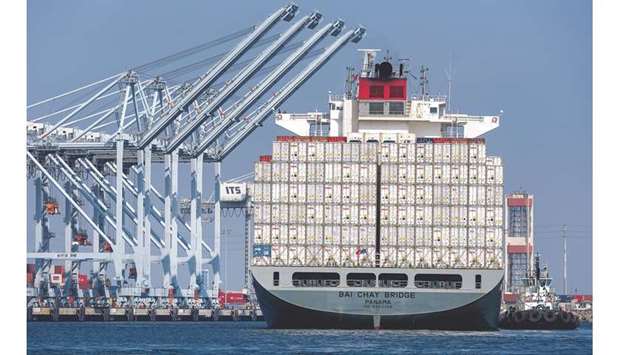The United States’ trade deficit in goods narrowed sharply in September and inventories at retailers surged, sealing expectations for record economic growth in the third quarter after the worst performance in at least 73 years.
The data from the Commerce Department yesterday added to reports ranging from retail sales, durable goods orders and housing that suggested the economy has regained some footing, though gross domestic product would still likely remain below the department’s forecast for the fourth quarter.
The anticipated surge in GDP was driven by a more than $3tn government rescue package early this year, which provided a lifeline for many businesses and the unemployed as the Covid-19 pandemic disrupted the economy.
The fiscal stimulus has since been exhausted, leaving the outlook for the fourth quarter murky amid a resurgence in new coronavirus cases.
The government is scheduled to publish its advance GDP growth estimate for the third quarter on Thursday, five days ahead of the US presidential election next Tuesday.
“We should remember output will be below that of the end of fourth quarter of 2019,” said James Knightley, chief international economist at ING in New York. “There is a long way to go before the economy is fully healed and unfortunately the challenges are mounting.”
The goods trade deficit decreased 4.5% to $79.4bn last month.
Exports of goods increased 2.7% to $122bn, led by a surge in shipments of foods, feeds and beverages. There were also increases in exports of motor vehicles, consumer and capital goods.
Exports of industrial supplies fell.
Imports fell 0.2% to $201.4bn last month, pulled down imports of industrial supplies, consumer goods and other goods.
US stocks fell as spiralling coronavirus cases soured investor sentiment.
The dollar rose against a basket of currencies.
US Treasury prices were higher.
September’s decrease in the goods trade deficit after two straight monthly increases suggested trade would be a smaller drag on GDP growth than had been anticipated earlier.
The trade hit to output could also be offset by accumulation of inventories.
Stocks at retailers jumped 1.6% last month after gaining 0.5% in August.
Retail inventories excluding autos, which go into the calculation of GDP, rose 0.9%. The trade and retail inventory data put a upside risk to the third-quarter GDP growth estimate.
According to a Reuters survey of economists, the economy likely grew at a 31% annualised rate in the July-September quarter.
The anticipated historic growth pace would follow a 31.4% pace of contraction in the second quarter, the deepest decline since the government started keeping records in 1947.
“It will still likely take until the third quarter of 2021 for real GDP to regain its level of the fourth quarter of 2019,” said David Kelly, chief global strategist at JPMorgan Funds in New York.
Business / Business
Record Q3 growth assured in US as goods trade deficit falls and inventories rise

A tugboat guides a cargo ship into the Port of Long Beach in California. The goods trade deficit decreased 4.5% to $79.4bn last month, according to data from the US Commerce Department yesterday.


